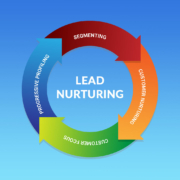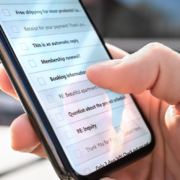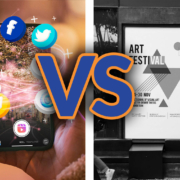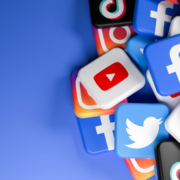Do You Need to Try Influencer Marketing? (And What Is It?)
Influencer marketing is a form of social media marketing that companies can employ to get their products or services in front of their target audience. It’s a digital marketing tool that leverages the followers of an already-established account to reach a new audience (with reciprocity, of course).
Table of Contents:
- Do You Need to Try Influencer Marketing? (And What Is It?)
- What Is Influencer Marketing?
- Influencer vs. Content Creator
- Pricing
- Type of Influencers
- Hold Up
- Don’t Sleep on the Nano- and Micro-Influencers
- Does It Make Sense to Try Influencer Markering?
- Finding the Right Influencers
- Let’s Do This By Hand
- Who Am I Kidding — I Need Help
- Where to Find Social Media Influencers
- TikTok
- YouTube
- Twitch
- Snapchat
- Podcasts
- Don’t Worry; We Got Your Back
What Is Influencer Marketing?
Let’s get into it. Influencer marketing strategies use content creators that your audience already follows to increase brand awareness to more potential customers. It’s basically a celebrity endorsement for the modern age — and way more accessible.
A successful influencer marketing strategy involves a lot of planning and research to choose the influencers your brand should work with. At the end of the day, influencer marketing is based on the partnership between you and the content creator. In basic terms, the influencer posts on their own account about your brand, product, or service — and their followers become potential customers.
Influencer vs. Content Creator
When talking about influencers, you may often hear the term “content creator” because it better describes the work they put into their partnerships. (Plus, the term “influencer” has gotten a bad rap over the years.) But there is a distinction. Think of it this way: influencers are inherently content creators, but not all content creators are influencers (i.e. they don’t work with brands).
Posting a branded TikTok involves hours more work than the minute-or-so-long video suggests. Influencers must have a clear grasp of their audience (including their likes, interests, and demographics) to best make videos or posts that resonate with them. With influencer content, the goal is more than just engagement rate — they want people to take a step further and purchase from the brand (using their coupon code, special link, or anything else that gives them credit for bringing in the new audience).
Pricing
There’s no such thing as free advertising, and that certainly goes for any influencer program you start. Content creators need to be compensated for their work, but how that pricing shakes out depends on metrics like follower count, engagement rate, and possibly sales generated. Brands can pay influencers a lump sum for their work, provide free products, or generate a specific discount code or link to share with their followers. With a discount code, influencers get credit for any sales made thanks to their content. You get more customers, and they get compensated more. What does that mean? They post more about your brand to up the pay they receive. It’s a win-win for the partnership.
Types of Influencers
Not all influencers are created equal — and neither is their pricing. Because follower count is such a major factor in determining the price of influencer marketing efforts, there are five different types of influencers.
- Nano-Influencers: 1,000 to 10,000 followers
- Micro-Influencers: 10,000 to 15,000 followers
- Mid-Tier Influencers: 50,000 to 500,000 followers
- Macro-Influencers: 500,000 to 1,000,000 followers
- Mega-Influencers: 1,000,000+ followers
Hold Up
Take a second before you judge an influencer on their follower count. While it’s a good starting point, follower count alone is not enough to predict a successful influencer partnership. What good is a mega-influencer that has millions of followers if you’re talking to the wrong audience? Sure, millions of people saw an Instagram post, but that doesn’t mean their followers are buying what you’re selling. Even mega corporations like Chipotle partner with food-focused accounts, not fashion influencers or fitness gurus. Know your audience and the types of accounts they follow.
Don’t Sleep on the Nano- and Micro-Influencers
Lower-level influencers have a great return on investment. Not just because they’re less expensive, but because you can get more out of the partnership in sales. Finding smaller influencers that fit nicely with your niche or have a similar audience have an easier time convincing their followers to head over to your site and make a purchase. Before spending the big bucks on someone with tons of followers, try a few nano-influencers or micro-influencers first — as long as you do your research and make sure your target audiences go well together.
Does It Make Sense to Try Influencer Marketing?
Influencers can be a great part of your content marketing strategy, but that depends on the type of product you’re selling. While any company can reap the benefits, some tend to find more success than others. The easiest things to sell on social media platforms are low-price, low-commitment items that are easy to buy on an ecommerce site.
For example, some influencers love to post “get ready with me” videos. This type of content is perfect for influencers to show off their make-up products, headbands, jewelry, clothing, or anything else that naturally pops up in the video. All of these products are low commitment and don’t break the bank, so it’s easy for a viewer to hop to the site and quickly make a purchase (especially if they have a discount code courtesy of their favorite content creator).
Finding the Right Influencers
So you know you want to try influencer marketing, but how do you know which ones to partner with? You can either do this research manually or ask for help on influencer marketing platforms like Influencity. Let’s talk a little bit about both strats’.
Let’s Do This By Hand
Try searching for topics or hashtags that you think (hopefully know) your target audience follows or is interested in. Take a look at the first few people that pop up. Does the type of content they post resonate with your brand? Do they already have partnerships that compete with your business? Painfully look through as many as it takes to find someone that may be interested in working with you. Send them a DM or email to get the ball rolling. Expect to reach out to a whole lot more accounts than you actually end up partnering with.
Who Am I Kidding — I Need Help
If spending your mornings and afternoons mindlessly scrolling through social networks to find influencers does not sound fun, we can’t blame you. Thankfully there are a few marketing tools that are basically an influencer marketing agency you carry with you. They let you search the world wide web on one site, filtering by follower count, engagement rate, related topics, interests, and more fun stuff like that.
If you’re struggling to find your way in the influencer marketing industry, you can also call up your favorite local digital marketing agency to help you through it.
Where To Find Social Media Influencers
It’s simple to say that social media influencers are, well, found on social networks. Before you start diving into any old social media platform, think about your audience. What social networks are they on? Just like your social media marketing strategy for your own company, apply that to your influencer strategy.
TikTok
TikTok is filled to the brim with influencers. If you’re out of the loop, content creators make one to three-minute videos that get shown to not only their followers but to other people’s “FYP” (a.k.a. The “For You” page). This type of content is perfect for selling products because potential customers can actually see them being used or what they look like in person.
While TikTok is considered to be just for the younger generation, its popularity has seen growth in all demographics. Although, the primary age group is still 18-24.
Instagram influencers can post all types of content. Stories, posts, and reels (a.k.a. Instagram’s response to TikTok) can all be utilized to show off your product to potential customers. Because Instagram is so visual, it works best for products that you can see in use.
While Instagram also has the same largest age group as TikTok (18-24), it has a great grasp on both the millennial and Gen Z generations, with a third of its audience filling out all other age groups.
YouTube
Before there were TikTok and Instagram Reels, there was YouTube. Influencer marketing was utilized on YouTube way before it became a buzzword. Content creators on YouTube can make an entire video dedicated to your product or show it off at the beginning, middle, or end of their video (pricing varies based on where you want it).
YouTube has a wide primary age group, ranging from ages 15-35. Not only is YouTube seen as a social media platform, but it’s also easily becoming a pseudo-streaming service as users spend an average of 45.6 minutes per day watching videos on the platform.
While social networks have come and gone, Facebook has remained the largest social media platform among consumers. While younger generations flock to other platforms, Facebook’s largest age group is 25-34. Users still spend an average of half an hour a day on the site (more like on the app), but that number was once much higher. As popularity increases for other platforms, this time has decreased.
Twitch
Twitch can be a very beneficial social network to try influencer marketing thanks to its inherent niche market. Users who visit Twitch have specific interests — and if you match that interest, it’s money.
If you’re not up with the times, Twitch is an interactive live-streaming social media platform. It gained popularity through content creators live streaming while they play video games and provide commentary. Influencers on Twitch can be very successful as they gain loyal followings — as long as their audience makes sense for you to target.
Snapchat
Snapchat has the youngest average user, with over 30% of users aged 18-24. Influencer marketing strategies here are similar to Instagram, with content creators sharing short videos as “stories.”
LinkedIn is primarily made up of the 30-39 age group. Influencer marketing on the platform isn’t exclusive to B2B companies. Thanks to the platform leading people to update their profiles with their job titles, industry, and location, it’s easy to talk to these segments based on their interests and work.
Podcasts
People tend to forget about podcasts when discussing influencer marketing, but it can be extremely useful. Podcasts have subscribers and loyal listeners who tune in for every new episode. Partner with a podcaster to have them talk about your brand on air — it’s that simple.
Don’t Worry; We Got Your Back
You don’t have to manage your influencer marketing industry by yourself. Hire a digital marketing agency that knows all things content marketing (including working with influencers). Lucky for you, there’s one right here! Give us a call, and take the first step at making your marketing dreams come true.












